#LED Chips Market Share
Note
I’d actually like to hear your thoughts on that Unknown birthday cg


I actually love the composition of this artwork. It'd be wrong to share it without sharing the other half to it, though. Saeyoung and Saeran are a package deal. But, as it stands, these images stand in contrast to each other for a reason. Saeyoung's at a party that his friends put together for him, and Unknown's at a party Rika made for him. There are undeniable facts about these images.
Unknown's staring into a mirror, his eyes in a trance as he watches his reflection, and to me, it's always read like a dissociative episode. He's spaced out for a reason. He was trained to hate his face because it was his brother's face. He avoids looking into mirrors for a reason... and yet, on his birthday of all days, he's staring into a large mirror at his reflection.
A reflection that's known to spark feelings of contempt, sickness, and anger in his heart.
Why?
Why is looking into a mirror when mirrors are known to make him feel sick? Unknown wouldn't choose to do that on the day that sets him off. He wouldn't! I think, one could argue that maybe he would if he thought it might remind him of why he's upset to begin with. But, he doesn't purposefully go out of his way to trigger himself throughout the game, if it happens, it's far from happening on purpose.
Which is what led me to believe Rika hung the mirror from the wall OR choose that spot purposefully—to hurt Unknown. That much I can say for certain.
Even on his birthday, he's not ALLOWED to forget what she's trained for. He's not allowed to be happy. He's only allowed to think about the brother who STOLE EVERYTHING from him while he rots away with nothing to his name in the walls of a Paradise that will never a sincere Paradise. He has to think about the brother who MADE HIM feel bad. He can't escape it. Rika won't let him escape it because he's a simply a weapon for revenge now, no longer does she see him as a son.
His birthday cake is made of chocolate and his pint of ice cream is chocolate, too. There aren't many things he talks about enjoying in the game, but he does make it clear that he enjoys mint chocolate chip ice cream.
Ray revealed that fact in 2019. I mean, could that be his favorite flavor and not Unknown’s favorite? That's always possible, after all, they're not the same person. But, I have always operated under the suspicion that they share favorite ice cream flavors. They like how it stays on your tongue, cold, sweet, and just a little bit chewy. It's nice on a hot day.



I don't think he's super picky about ice cream since you probably can't go wrong with ice cream in his eyes, but the fact that he's able to establish a favorite kind of ice cream shows me that he does care about what he gets if he's allowed to have a choice. Like, I would love vanilla ice cream if it's offered, but if you had an assortment, I'd want chocolate or mint chocolate chip!
This is a character who has been repeatedly robbed of his autonomy time and time again, both with contempt and with a naive thought to protect them without thinking of his choice, and if he was asked what kind of ice cream he wanted for his birthday here, I think he'd pick his favorite if he could.
He clearly didn't pick here. I mean, you can check out the seasonal chats if you want to for 2020. Unknown tells Yoosung and Zen that he loves ice cream and even if they think he's some kind of program and not a real person, he still wants them to leave out the ice cream because, hey, what kind of person wouldn't want an ice cream if it was offered to them? I don't know people who would turn down the ice cream.
But, again, if you can choose the ice cream you're given, won't you pick your favorite flavor?





If you buy the folders from the market, you'll be treated to Unknown and Seven enjoying each other's ice cream, but while Saeyoung looks content with his ice cream, Unknown isn't enthused by Superman ice cream. My boy isn't picky about ice cream but he probably wouldn't want to consume his twin brother's favorite flavor... especially not at a time wherein anything related to Saeyoung makes him want to gag.
If the only ice cream he had to eat was that of his brother's favorite flavor, I think he'd do it, but I don't think he'd be happy about it in the end. It would take the ice cream experience, but he's not going to say no to something that makes him happy in a world that already has caused him to feel apathetic about most things. Yeah, it might not make him happy to have something that reminds me of his brother, but most things remind him of his brother and it's an inescapable tragedy.

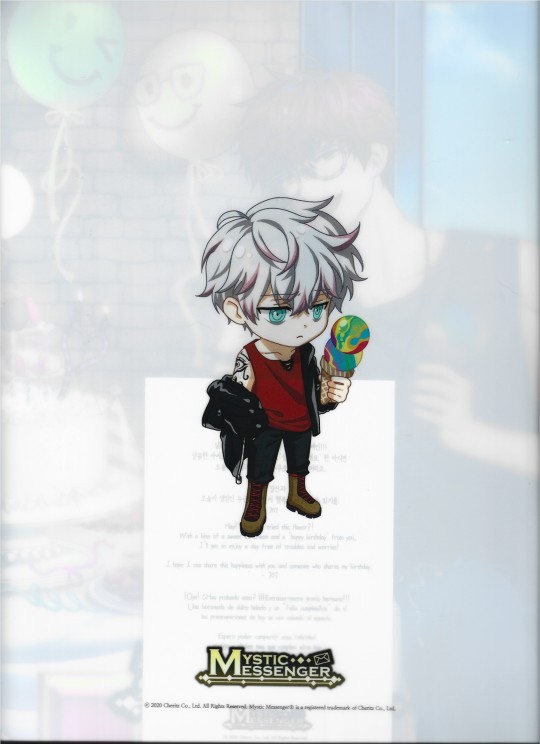
I don't think I need to talk about the representation of black roses in this game when it comes to this character, either. He is given this particular flower whenever he is in a timeline that doesn't bode well for him. It is a representation of the fact that he no longer has hope for a brighter tomorrow. All he sees on the horizon for his life is death and apathy.
Death can also be transformative, but that is not the reference we are meant to take away when we see it represented like this. GE Saeran's got a black rose around his throat during the RAE when you team up with Rika to turn him into a product of consumption to "survive" in a world that lets Saejoong get away with everything. But, anytime I see those flowers with him, I associate it with a loss of autonomy.
I associate it with Rika's control.

The one thing that's bothered me ever since I've seen the image is that bottle of alcohol sitting in the background. I mean, it doesn't have to be alcohol in that fancy sparkling glass, but there aren't too many drinks that are placed inside of those containers and the more I think about it, the more uncomfortable I become. I try not to think about it, and I often tell myself that the only reason why it's there is because the artist might not have been told about the character's trauma.
After all, if the artist was made aware of this fact, it means the choice was intentional to place the bottle of alcohol within the image. I have no idea if the artist was made aware of that fact. The only reason why I tell myself that the artist might not have known is because Rika was also represented with alcohol in one of her birthday pictures, and she does not consume alcohol frequently or at all, either.
In fact, Rika canonically scolds Jihyun and Jumin often for their poor drinking habits and reminds them to be responsible. There's a chat in Another Story where Jumin and Jihyun turn silent when you echo the words Rika once told them about alcohol.



The alternative in this situation if we don't believe the artist made a mistake without being aware of the lore is for me to believe that she specifically chose to put alcohol on the table knowing that it would trigger him.
Because, unfortunately, since the artist made that decision, it leads the player to interpret that she purposefully put that bottle there to hurt him. I recognize that most people aren't going to think that hard about this and for the most part, it might fly over your head without a second thought, but it bothers me. I am a stickler for fine details and if you're a person who loves to speculate and dig into some media for everything you can find, this is one of those things that’ll haunt you.
At the end of the day, it comes down to how you want to interpret the image, if you want to take it at face value for what it is and recognize that the artist likely didn’t know, that’s okay. If you would prefer to read into it as something that makes your stomach turn into knots knowing that Rika might’ve hit him where it hurts most, that's alright, too.
I try to suspend my disbelief as much as I possibly can to ignore that bottle, but the bottle is there, and I can’t avoid it no matter how much I want to unsee it.
I have a hard enough time in the fandom when it comes to people representing the twins and alcohol as it is. These two are never going to drink a drop in their life, and if they do—There is a situation where Saeyoung drinks champagne in V Route, but it’s when he’s hit rock bottom and he thinks his brother is dead and it’s been two and a half years since then.
The last time his brother was alive, there was going to be a party. The trauma is going to come back to life as soon as the party is brought up again, and that is the only reason why I think he decided to drink that day. He was at the end of his rope, and he decided he would do the one thing he promised never to do because he thought it would numb his emotions enough to survive the way he saw his wretched mother tried to numb every miserable moment of her existence.
I don't think he enjoyed it, though. I think he took a sip of it, and then he immediately wanted to throw up. He gets rid of the rest of the tiny glass and he never touches alcohol ever again.
I've seen far too many people represent these two as characters that will drink without a second thought. There is no mention of their trauma, there is no regard for what they've been through, and there is not a second in the narration that even remotely points to the fact that they have trauma that stems from their mother's alcoholism.
I can't tell you not to write something you want to write, just as much as someone can't tell me not to write what I want to write, but when you have no regard for this specific trauma, it makes me wonder how much compassion you have for somebody who has the same kind of trauma in real life.
Because, this may be a huge stretch, I know, but if you can't respect a character who said they don't want to drink anything that contains alcohol and you write them doing it anyway, who’s to say that you’ll respect a real person telling you the same thing?
Far too many countries have socialized drinking to the point that anybody who doesn't want to drink, regardless of the reason, will be shamed or ostracized for it by others in the room. I can't tell you how many people have tried to tell me to take a small sip of alcohol since becoming an adult, and I’ve refused. It's fine and dandy if that's what you want to do, as long as you're doing it safely!
But, why am I the one who is asked questions for saying no?
I don't shame anybody for enjoying and consuming alcohol, so why is it that I hear, "Well, just take a sip! How can you know if you've never had it? Here, let me shove this in your face and keep pushing you to do something you're clearly not okay with!" I don't want it.
This is also the case for many people my age who aren't interested, because I've heard the same thing from others who have been poked and prodded at like me. None of us owe you an explanation as to why we don't want to consume alcohol for whatever reason. No means no. That should be respected at the end of the day, point blank.
Saeran hasn't said it as bluntly as Saeyoung, but you should be able to infer quite easily.
#mod kait#ask#mystic messenger#anon#mysme#saeran choi#mysticmessenger#mm#choi saeran#saeyoung choi#unknown#saeran#unknown mystic messenger#unknown mysme#unknown mm#character analysis#tw alcoholism
48 notes
·
View notes
Text
1500 FOLLOWERS CELEBRATION post w/ page mascot Springin' Chip!

Heya folks! Springin’ Chip here with a very special celebratory post! This last week, th3-0bjectivist hit 1500 followers! To be fair, about a quarter of his followers are more than likely AI pornbots, but let’s not get hung up on unnecessary details! Being a canine, there’s very little that I can personally offer our audience on Tumblr… save for some drool, dog snot, and poop. So, we’re going to celebrate the only way I know how!

Pictured with me in this photoset is my big sister, Ruby, and for this commemorative post you get to watch me beat her up! I assault my big sister all the time these days, sometimes for no reason, numerous times a day! I think she likes it! If weight class and overall size were a factor, Ruby could just brush my little Spaniel ass aside like a dust bunny. But she plays well with me, and just lets me kinda passively dominate her most days. Works for me! On with the festivities!!!

And now for some page lore! About a decade ago, th3-0bjectivist was comically barely known as v3ritasartiste on Tumblr. It was a page centered around conspiracy theories… and art, and music. And whooooooo boy, did it suck ass through a bamboo straw! The layout was atrocious, the conspiracy-addled dipshit in charge of the page had no idea what he was doing because he was high out of his mind on government-strength sativa and indica strains 24/7, and nothing he posted made a lick of sense! After gaining a whopping 78 followers over two years, butt-hurt and utterly disregarded, v3ritasartiste shut down his page out of pure frustration.

Yeah, take that Ruby! Years later, during the stay-at-home fallout from ***THE UNSPECIFIED VIRUS FROM UNKNOWN ORIGINS***, v3ritasartiste became th3-0bjectivist with three main goals in mind: 1. Jettison the conspiracy bullshit entirely 2. Create a page that actually makes contextual sense 3. Promote art, both own and others. And, by gum, it worked! Well… sorta. There was still a learning curve and he pissed off a few people to start things off (those blocks were well-earned in retrospect) because he was too brash and cocky, but some social refinement and further diversification of materials led us to where we are today. 1500 and counting!

Do ya see how Ruby just lets me rule her!? She could swallow me in a single gulp, damn I love her so much! Getting back to the point of this post, th3-0 wants you to know he greatly appreciates your follows, your likes, reposts, and most importantly your presence here on Tumblr! You may not realize it, but we’re all on a journey together while we’re on this platform. th3-0 has been able to share some of his joys, sorrows and art with you over the years… and those moments aren’t just precious, they are the universal moments that bring us all together as a species. Well… not me personally per se. Just to be clear, I’m a dog! Th3-0, who is a human, just wanted me to express those things to you… yeah, that’s the ticket.

Unlike last year, we’re at full mast with new art. We’ve got plenty of new paintings coming which just need to be more fully realized. We’ve practically cornered the market on original painting-animations on Tumblr, and musical entries and snarky commentary will continue to flow like wine until we’ve determined they are no longer working for us (which will be NEVER). Warts and all, th3-0bjectivist LOVES Tumblr. And just a reminder, if you’re ever interested in purchasing some canvas work, which would really help us, just head on over to our page on DeviantArt and browse the selections in the Featured section. Our wall decorations can make your home or business weirder and more wondrous at the same time! Tumblr restricts gifs to a pathetic 10MB download, which severely confines the visual quality of the gifs. But on DeviantArt, all our artistic gifs are available in high definition and they’re free to download!

Time for a nap with my big sis…. while th3-0bjectivist deletes 386,712,364,871,236,857,623,547,612,376,451,457,282,367,487,264 pornbot messages from his Tumblr inbox! Thanks Tumblr, we love you all!
Until next time fellow literate dogs,
¬ Springin’ Chip for th3-0bjectivist

The 0bjectivist on YouTube: https://www.youtube.com/channel/UC2sONH8IwzL_2sZie0ZNSnw/
I’m also on BitChute: https://www.bitchute.com/channel/uvKfJpNkzkIL/
FULL ART GALLERY on Instagram at: https://www.instagram.com/th3_0bjectivist_gallery/ <---- screw that garbage website, we deleted our profile this year!
FULL ART GALLERY on DeviantArt at: https://www.deviantart.com/th3-0bjectivist/gallery
#page update#Springin' Chip#thank you followers!#this page#celebratory post#Ruby#page mascot#dogs on tumblr#dogblr#springer spaniel#new painting next week#this blog will continue as is until there is a needed change#my dogs
15 notes
·
View notes
Note
🌿 i talk in my sleep - send me your ideal idea of a first date and some facts about yourself (name/nickname, favourite pastry, favourite song, random fun facts etc.) and i'll ship you with a character and write a short drabble about them → please specify your sexuality, pronouns and whether the ship is supposed to be romantic or platonic!
Hi! I hope it's still the 14th where you are haha, but if it's passed the date, you can completely skip and delete this!!
Ideal Idea of a First Date
- Definitely attending a festival or carnival of some sorts! I love strolling around to see different carts and markets and the music and performance!! And ending the day with a fireworks show of some sort!
Nickname
- On here, my friends call me Oath! (but for the drabble you can just make it an 'x reader'! I don't mind ^_^)
Favourite Pastry
- I absolute LOVE cookies, especially chocolate chip and when it's soft baked, the best kind uwu
Favourite Song
- About Time (feat. Kelsey Kuan & prettyhappy)
Random Fun Fact
- I am pretty introverted when I first meet people, but once I feel comfortable and safe with someone, I open up and become a very energetic and talkative person, especially if it comes to topics I like or the person likes, I love listening to people's interests and have them sharing it with me
Sexuality and Pronouns
- I am a straight hetero woman, I go by she/her but I don't mind they/them pronouns as well!
I would like it to be a romantic drabble please! (And fluff if you don't mind XD)
Thank you in advance, I love your work, and I hope you have an amazing day! Take care ^_^
shipping people with grishaverse characters // the garden event

don't worry, you were just in time!
i don't think anyone's surprised by who i'm shipping you with
since we never really heard much about shu han in the books, i took the mid-autumn/mooncake festival as inspiration for this! (it's only very loosely based on it and i don't mention the history, so if you're interested in the festivities, please look them up, it's so interesting to read about!!)

“I cannot believe that the one time Nikolai is dragging us off to Shu Han is also one of the days when the whole country chooses to abandon their houses and fill up the streets,” you mumbled, more to yourself than to anyone else.
Tolya only chuckled in response, a few loose strands of hair falling lazily onto his forehead. Both of you wore a somewhat traditional robe that Nikolai had gotten all of you to blend into the crowds, but only Tamar and Tolya really managed to pull it off. You still had to admit that the fabrics looked more than stunning, especially in the warm red light emitting from all the paper lanterns around you.
“We should be glad that Nikolai didn’t intend on going through with that plan of his today.” He whispered back, almost having to lean down towards you so that you could hear. “We wouldn’t have a chance getting through the streets without causing some sort of commotion.”
“At least something,” you chuckled. “As frustrating as our favourite privateer’s planning skills are, I’m still excited to see what this whole festival is about.”
He raised his brows in amusement. “Have you never heard about the Moon Festival?”
“Tolya, I grew up in Ravka and spent my entire life cooped up at the Little Palace, studying manuscripts older than that hag Baghra, do you really think I know what kind of celebrations the Shu have?”
“Oh dear, then I have a lot to show you.” With that, he grabbed hold of your arm and pulled you face-first into the crowd.
There was so much going on and you barely had time to catch a proper breath before the next impression was basically thrust upon you.
First, he led you to what looked like a parade passing through the streets. People dressed in colourful hanfus and intricate costumes danced amidst the onlookers, laughing and singing songs that you had never heard before. A few of them held up a giant puppet of a bright green dragon, making it dance and writhe over their heads. It was a stunning display of colours and music alike, and you couldn’t help but gape at the performers as they walked past you.
“Dragon Dance,” he stated matter-of-factly. “It’s a tradition as old as time. They used to only do it during times of drought, because the dragons are associated with rain here, so they hoped that this dance would bring us a prosperous harvest.”
“It’s most definitely a stunning tradition.”
“You’d be surprised about how many stunning traditions the Shu have other than this.” He smiled, letting his eyes wander over the parade one last time before offering you a hand. “Are you hungry? I think I know something that you might like.”
This statement should remain to ring true. He took you to a less crowded market street, vibrant shops and huts lining the sides of the road nearly everywhere you looked. There were shops selling masks, fabrics and dresses, or all kinds of food.
Tolya stopped in front of a bright red booth, offering something that looked to be tiny sweets. He called them mooncakes and went on a long, complex rant about how his sister always used to steal the best ones while he was left with the flavours that no one really liked. After he was done rambling, he bought a little box full of mooncakes and two cups of Kuei Hua Chen Chiew, also called osmanthus wine as he explained to you later.
For what felt like the hundredth time today, he pulled you away from the commotion and towards a little ledge that overlooked the lower parts of the city and quite a bit of the raging sea. The city was bathed in the red glow of the lanterns and flashing lights, competing against the heavy darkness that surrounded you. It was a strange, but beautiful sight to see. And it was made even more beautiful by the fact that you had someone to share it with.

72 notes
·
View notes
Text
The Fairy Shareholder
Kitchens Inc had endured another torrid year; the crumbling capstone on a miserable decade. The old board had been out of ideas: revenues were down, profits were non-existent, and the whole company was circling a drain of its own design, making and installation. They could have done with a fresh start, but that had been years ago. At this point, they'd needed a miracle.
"Shall we start with introductions?" It was the first shareholder meeting since the takeover, and board were ready to face judgement. As the shareholder present, Juliana took the lead. "Juliana Merryweather, owner and CEO"
"James Barentin, former CEO," one man followed. He was the spitting image of the company founder, sharing his nose as well as his name. "Now head of sales and shareholder liaison."
"William Barentin IV." The man next to him also shared in both; another chip off the old block. "Former head lobbyist. Now responsible for white goods."
It hadn't always been this way. This had been the first business of its kind in the state, producing and fitting kitchens for office and home, and in those early years the market had been theirs: able to set the price of their wares, and decide where they wanted to set them, with a choice of customers waiting for a consultation. Their founder, William Barentin III, had led them from strength to strength in those halcyon days. There had been a bust of him in the lobby, a sign of their prestige, until the recent desperation had come to pass.
"Blane Lumber, former chair of this office." The introductions worked their way around the room. Blane was another man, this time with no remarkable features at all. "Now in charge of surfaces."
The problem with coming first was that the race never ended. Today, the market was awash with competitors, all with more unique names and better brand recognition: locking down the 'Kitchens' trademark had felt like a coup at the time, but it was less useful in an era more focused on Search Engine Optimisation. It took something more catchy to seize a modern customer's attention, a sense of originality - and being the actual original didn't help.
"Harry Goldman, water tank specialist." Another completely average-looking man. Looking across the desk, Juliana saw that most of the others were. She really had to get better at that, with workplace diversity and all. "I look after plumbing."
Of course, Juliana knew who each of them were, even if a few did look a little too alike. She'd given them their jobs, and given most of them their names. James had brought her in, and survived as the only remnant from the old board, helping with the transition to her new regime. Everyone else had gone, and their salaries had been the first costs they had saved.
She'd actually wanted a complete overhaul, but then James was a salesman, and he'd managed to convince her of what he could add: Juliana supposed she wasn't the first the step into the showroom wanting a clean slate, only to be upsold to the speckled marble tiles and countertops instead. She was glad of him, though. The others could be difficult to manage, and it was good to have an experienced hand to show them how things worked - hands included.
It hadn't been hard to convince him of her own resume. She'd started off as a godmother, like most in her industry, but corporations were people in law, and 'minority shareholder' felt roughly equivalent. They called them angel investors: venture capitalists who came in to support struggling businesses, management consultants who helped them to turn things around. She was a new kind of patron for the consumerist age, giving a makeover to miserable companies and helping to change their fortunes as a result.
Juliana had been used to making coaches out of pumpkins, their drivers out of mice; now she turned them into career coaches instead, or made do with computer mice to drive the business on. It was a massive saving on staff costs. They only cost her an arm and a leg, or two, and the rest of the body to attach them to. She arrived in a shower of sparkles, slashed expenses, found a few efficiencies, and sent them on their way. If that was their dream, even the most down-on-their-luck company would go to the IPO.
"Blane, if you could go first." With the roll-call out of the way, she moved onto the numbers. It was largely good news. "Worktop installations are up twice on last quarter. Are we sure these figures are accurate?"
"Well, we do employ a number of counter-fitters." In exchange for her investment, Juliana had told James she would need a seat on the board. That was Blane. He'd been an office chair until she gave him a promotion, and liked making her regret it. "But yes, business has been good. We've focused on the areas you suggested, and it's really working out."
"Excellent." She turned to Harry, who had once been the office goldfish. "Did the savings on sinks work out?"
"They're still working," he said. Harry had been his original name, which had saved her from having to think of one. He'd always known his way around a bowl, but the promotion had been a whole new learning curve: having to find his feet, and then figure out how to use them. "We have a steady flow of work coming in, but most of it's still in the pipeline. You'll see it in next quarter's numbers."
The puns were a side effect: on receiving the gift of language, her creations felt the immediate urge to play with it, like a child unwrapping a new toy on Christmas morning. Juliana had tried to tone them down, but at the end of the day there was no harm in letting the board have fun, provided the business was running smoothly. They might not be around for too much longer, and they might as well enjoy it.
"Okay, if you're sure." She thought about making a joke in turn, but didn't want to faucet. "But remember what's at stake here, gentlemen. We can't afford to let this company go bust. No offence, William."
"None taken." William was the old head in the room, having been in the company for generations. He'd been the bust of the founder in the lobby, now transformed from marble into flesh: it was easier, when Juliana had something similar in appearance to start from. It gave her more to work with, rather than having to come up with the details by herself.
"I'm confident," Harry assured her. "I'm basin everything on solid data from James's team. And yes, we know the stakes. How could we forget?"
She'd given them that briefing on day one. The company needed to get back into the black before the clock struck year-end, or else the spell would wear off: the business would fold, and the board would return to their original forms. That was their motivation - literally working for their lives, or their new ones, in Harry's case. She'd thrown him into the deep end, and it really had been sink or swim.
12 notes
·
View notes
Note
This is my first Halloween in a wheelchair so obviously my only costume options are Oracle or Professor X, and as I was looking up Oracle costume references I discovered that Cass and Steph are Batgirl again? In their original costumes??? and Babs is Oracle again??? Am I hallucinating? Is this worth driving to the comic store to read? I haven't touched DC since n52 lol
Well they're certainly not your only options but they are absolutely SUPERIOR options for someone who has the opportunity to take it! And...yes, okay, let me explain the convoluted mess that's behind the current state of events that is "we have three Batgirls operating simultaneously."
In August of 2020, DC had that massive upper management firing event that took out Dan Didio, Bob Harras, and most of the company's upper level editorial, marketing, and publishing staff; further job cuts happened later that year as well. This massively changed the creative direction of the company, leading to a situation where Future State (which itself was a restructuring of Didio's infamous '5G initiative') ended up as a two month "alternate future" event that led to the Infinite Frontier era (starting in March 2021) instead of a dramatic re-shifting of the DCU in the aftermath of the Dark Knights: Death Metal event.
At the time, the Infinite Frontier era was explicitly billed as "everything is canon" due to Death Metal's restructuring of the multiverse as an unlimited "omniverse." As part of this initiative, several things shifted slightly to the left re: the Batfamily. In particular, Cass and Steph were once again allowed to wear bat symbols and have their histories as Batgirl at least semi-acknowledged again (something that had been denied to them for 5 years via editorial mandate).
Thus, as of March 2021 Cass and Steph are both Batgirl again and operating as such. They gave Cass her pre-reboot!Batgirl suit again and Steph a restructured look that looks like a mashup of her Rebirth-era Spoiler suit and her 2009 Batgirl look. Effectively, Babs, Cass, and Steph are all operating as Batgirl simultaneously right now (the same is also happening with the Robin and Wonder Girl mantles: Tim and Damian are sharing Robin and Cassie and Yara are sharing Wonder Girl). DC also announced a Batgirls team-up book (which debuted last December) that supposedly starred Steph and Cass, with Babs acting as their mentor. Unfortunately, it's largely been....not good. The bar was six feet underground and failed to be cleared, unfortunately. Cass's and Steph's best appearances over the past year have been as cameos or supporting roles in other books.
Meanwhile, Babs, having ripped the chip allowing her to walk again out of her spine during the Joker War event earlier that year, got a replacement but was told by Luke Fox that doing anything super strenuous might cause it to degrade and break down (permanently, this time):

"No joke, there is no next time with the implant. Your nerves won't take to it. And we both know what it means if that happens." "I know. And I don't need it to work forever--just for now. I'm fine without the implant." "I know you are." -Batgirl (2016) #48
Theoretically, this was supposed to lead to an era of Barbara technically having the capacity to walk but largely retiring the Batgirl suit to be Oracle again. At least, that's what readers were told at the start of the IF era:

"How do you feel about being back behind the computer?"
"Honestly Huntress, it feels good. There's a big part of me that felt like I could never be in all the places I wanted to be in the costume. Now I can be everywhere again. I haven't hung the costume up for good, but I'll be a little more judicious about when I use it. Go a little easier on my spinal implant. And until then...it's not like this city is going to go wanting for a Batgirl with Steph and Cass on the job." -Infinite Frontier #0 (2021)
Early Nightwing issues seemed to bear that out. Tom Taylor's ableist writing non-withstanding, Babs largely operated as Oracle in both Nightwing and Tynion's Batman run. Then Fear State came around later that year and we started getting dialogue like this:

"That's it. I can't do any more from here. I can't find who's doing this or where they're doing it from. And I can't shut them down, not remotely. I think they're plugged directly into my system. I need to find exactly where they gained entry out there. -Nightwing (2016) #84
DC initially played it off as a one-time thing, a "Batgirl!Babs going out with a bang" story…and then 5 issues later, she was suited up again. And it's been happening more and more often the further away we get from the immediate aftermath of Joker War:
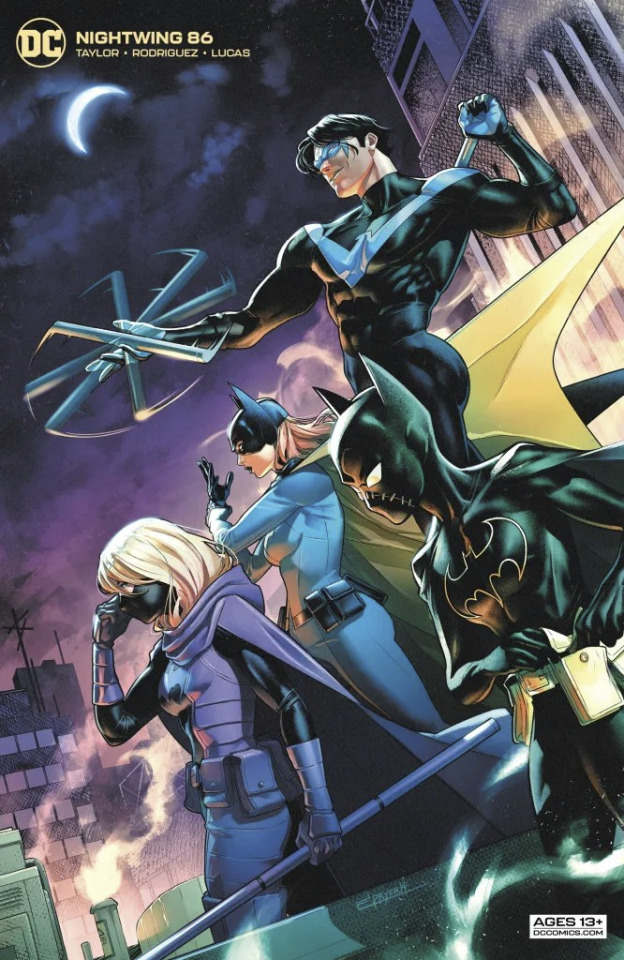
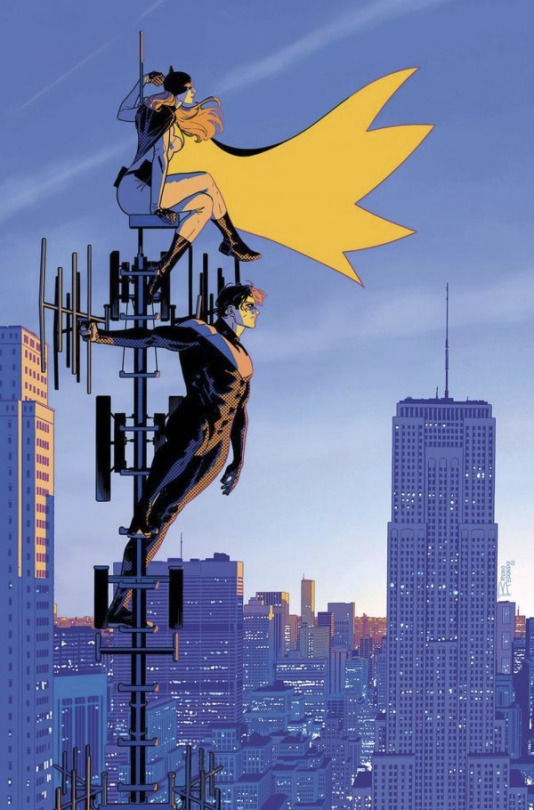
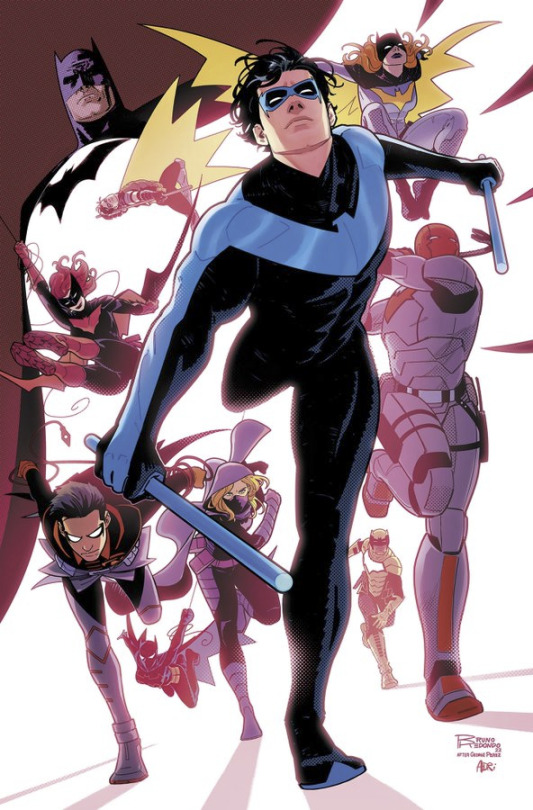
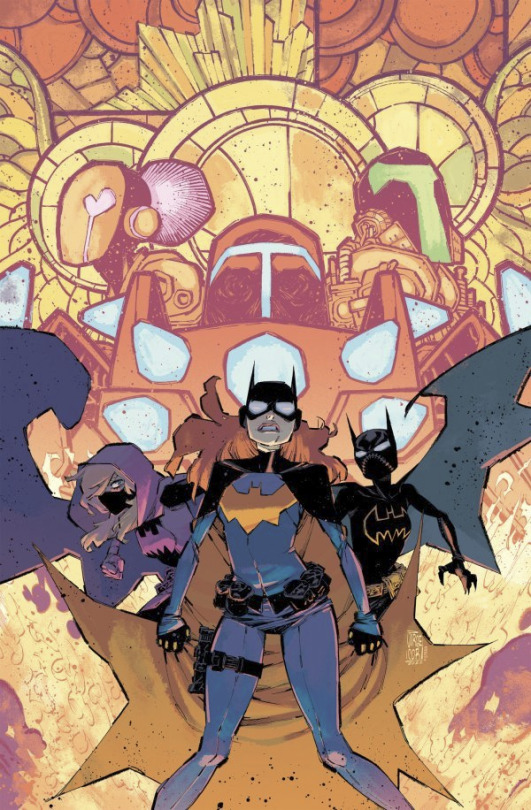
She's semi-regularly using mobility aids in Batgirls, but it's the ONLY book showing that and they're STILL having her suit up regularly. She's effectively a half-time Batgirl, half-time Oracle, and the only writers who have actually utilized her well as Oracle have been Tynion (to an extent) and Mariko Tamaki.
It's an extremely frustrating state of events tbh. On the upside, Cass and Steph are Batgirl again and everyone's pre-reboot history is at least mostly back; on the other, Babs is still the victim of some pretty heinously ableist writing and the restoration of everyone's pre-reboot history has been done so sloppily that in many respects it's difficult to figure out what's canon anymore and what's not.
In terms of going to the comic store/starting to read newer comics again, I think that depends on your perspective. There's absolutely some great stories starring the Batgirls that have been written over the past few years; if you want to pick up Mariko Tamaki's Shadows of the Bat: The Tower event from earlier this year (which as a bonus, is also a big Helena Bertinelli story and finally re-canonized No Man's Land) or her Batman: One Bad Day: Two-Face issue, those are two stories from the past year that are good. If you haven't been keeping up with comics since the New 52 period, I might point you to my Cass and Steph entries on my comics recs list, which feature a few solid recs that have been written since their re-introductions (I have yet to update the Babs entry, largely because I've been so dissatisfied with most of Barbara's comics written in the post-Flashpoint era).
....imo, before you drive to the comics shop, I'd pick out a few comic arcs that look interesting to you and read them on RCO first. There's definitely some gems to read, but we're still in a massive YMMV era for the Batgirls, unfortunately.
48 notes
·
View notes
Text
Good Stuff in 2023
Since every year seems to be shit, I thought I would go through some major news stories and pick out the ones that seemed pretty good, actually.
There's a bit of a USA bias in the source I used... but here's some year-end positivity, anyway!
January
An ebola outbreak was successfully controlled in Uganda
Sierra Leone introduced a law that reserves more jobs for women
The UN declared the current approach to repairing the ozone layer is successful and could return it to 1980 levels
New York's gun restrictions were upheld by the Supreme Court
February
Google lost $100bn in shares because its chatbot was crap (lol)
Tesla had to recall over 350,000 cars because its self-driving system was crap (lmao)
March
The International Criminal Court put out a warrant for the arrest of Vladimir Putin
12 Democrat-led states in the USA sued to attempt to protect access to mifepristone (an abortion inducing drug)
Donald Trump was charged with criminal offences in New York
The Royal Society tested robotic prosthetics with the public and found that over 95% of people could use them well within the first minute
April
Finland was approved to join NATO
Christina Koch was announced as the first woman and Victor Glover as the first black astronaut on a NASA lunar mission
The tiger population of India was confirmed to have risen by around 200
A SpaceX rocket blew up (haha)
Japan approved an abortion pill for use for the first time
Pope Francis announced that women would be allowed to vote in meetings of bishops
The US Supreme Court rejected a West Virginia transgender athlete ban
Washington state eliminated the death penalty and sterilisation as criminal punishment
The US Supreme Court protected access to mifepristone (see March)
The UK fined TikTok for mishandling children's data
NASA was able to extract oxygen from lunar soil
Germany confirmed the shut down of nuclear power stations in the interest of safety
May
Colorado state signed several gun control bills into law
Donald Trump was found liable in a civil case where he was accused of rape and defamation
North Carolina's governor vetoed an abortion ban
The UK's first "three-parent baby" was born via IVF
June
Former Brazil president (Collor) was sentenced to prison for corruption
Federal courts blocked laws preventing healthcare for young trans people in Kentucky and Tennessee
July
Donald Trump's request for a new trial (see May) was rejected
Sweden's bid to join NATO was backed by Turkey
August
FDA approved use of the first drug (Zuranolone) to treat postpartum depression
Direct detection and nanopore sequencing (DDNS) used to halve the time for polio detection
India's space agency achieved their first unmanned moon landing
September
Mexico's Supreme Court decriminalised abortion rights
The African Union permanently joined the G20
The EU raised their renewable energy targets
Donald Trump was found guilty of fraud in New York
Apple announced a switch to USB-C charging ports in its new iPhone
October
California banned driverless taxis
November
A court in South Africa ruled in favour of introducing shared parental leave
The UK Supreme Court blocked plans to send asylum seekers to Rwanda
An assault weapons ban in Illinois was upheld by an appeals court
The first images were received from ESA's Euclid space telescope
The EU started talks to bring Ukraine into the union
December
41 workers were rescued from a tunnel under the Himalayas in India
Pope Francis allowed priests to bless same-sex couples (but not for marriage... but still a win maybe?)
Supreme Court dismissed Ohio's attempt to enforce an abortion ban
Colorado's Supreme Court declared Donald Trump ineligible to run for office (only applies to Colorado)
IBM unveiled a quantum computing chip and machine
Google, Meta and other tech companies agreed to work towards open digital ecosystems (prompted by EU regulations on digital markets)
2 notes
·
View notes
Text
The United States has long struggled with the challenge of providing quality, affordable child care for working parents. Recent proposed investments in the “care economy”—part of President Joe Biden’s Build Back Better agenda—were left on the congressional cutting room floor. Despite this setback, the administration continues to take steps to address the issue through executive action, as our Brookings Metro colleague Molly Kinder observed recently.
This spring, the Biden administration, through the Department of Commerce, asked semiconductor manufacturers vying for a share of the $39 billion in incentives from the CHIPS and Science Act to include a strategy for workers to access affordable and high-quality child care services. While such actions will not alone buttress a care system that many argue is in crisis, the door has been opened for state and local policymakers, in partnership with employers, to try innovative policies that provide support to families in need.
In today’s modern industrial economy, reliable, affordable, high-quality child care is both a necessity and a mutually beneficial policy for workers, businesses, governments, and children. Workers benefit from higher earnings and a more equitable labor market. Businesses benefit from reduced employee turnover and absenteeism, increased worker productivity, and a larger pool of qualified job applicants. Governments benefit from the increased earning potential of children who attend high-quality day cares as well as an increased rate of parental labor force participation. Most importantly, children benefit by having a safe and supportive environment during the workday.
Yet despite these benefits, even before the pandemic, the child care system in the United States was falling apart. Today it is in even worse shape, putting undue pressure on parents—particularly mothers—who too often must choose between managing unreliable care arrangements while working or leaving the labor force altogether. Conservative estimates suggest that the nation’s inadequate child care system results in an annual loss of $122 billion in earnings and productivity—and that’s solely for parents of infants and toddlers.
Child care workers continue to be some of the lowest-paid professionals and often lack health care and retirement benefits. They earn less per hour than parking lot attendants and animal caretakers. Without concerted efforts to improve the quality and compensation of these jobs, the root causes that have led to a shortage of child care workers will not be addressed.
But paying child care workers more and providing them better benefits is a difficult proposition if parents and guardians are expected to shoulder the full cost. Across the country, the cost of center-based child care is higher than the cost of in-state tuition at a public four-year university. High-quality centers generally cost even more. The Department of Health and Human Services defines “affordable child care” as costing less than 7% of income; however, recent surveys have found that more than half of families spend 20% or their income or more on child care.
Finding solutions to such a widespread problem requires an ambitious approach. The incentives provided to employers and the new regulations introduced by the Commerce Department in implementing the CHIPS and Science Act could serve as the catalyst for implementing such an approach.
The Commerce Department guidelines afford a high degree of flexibility for semiconductor companies and the localities hosting them to develop proposals to receive federal incentives. This creates both risks and opportunities The risks primarily stem from individual companies trying to go it alone—if they create or run their own child care centers, they could potentially harm other businesses and workers by luring workers away from already understaffed and financially strained centers.
Better solutions exist, but they require a coordinated approach involving employers, economic development professionals, workforce developers, educators, and child care businesses. Such solutions involve leveraging state and local governments as partners to direct funds to communities and enable them to offer more, higher-quality, and affordable care to all families.
One solution that grant-seeking employers can implement is to enter into community benefits agreements, which articulate specific strategies for maximizing and sharing the benefits of public subsidies. For example, the Commerce Department might look favorably upon semiconductor manufacturers that propose contributing to community-wide funds for child care, which would go beyond merely assisting their own workers. Community benefits agreements could also be used to support supply-building efforts. For instance, Minnesota’s Child Care Wayfinder program identifies aspiring providers and helps them navigate the business and regulatory process to start new care businesses or expand existing ones. Other community benefits agreements, such as First Children’s Finance and the Illinois Facilities Fund, focus on helping providers excel through financing and operational success.
In their attempt to leverage semiconductor incentives to build broader industry clusters, state and local governments could also provide additional and sustainable funding for better child care for the entire community. One such mechanism to accomplish this goal is the creation of tax increment financing (TIF) districts, in which a portion of the increased property tax or other revenue in a designated local cluster pays for needed infrastructure improvements, including constructing child care centers accessible to all community members. In some states, it could also be used to expand education and training for child care workers.
Furthermore, state and local governments might also expand models like Michigan’s MI Tri-Share program, in which the cost of child care is divided between eligible employees, employers, and the state. The program is facilitated by hubs that operate out of local community partners, such as child care-focused nonprofits and economic development organizations that alleviate administrative burdens between employers, employees, and child care businesses. The hubs help employers identify employees who are eligible for the program, work with those employees to find licensed child care businesses, and collect payments from employers, employees, and the state to pay those businesses in a timely manner. Under this system, the cost of providing high-quality child care is distributed more broadly within the community, providing a stable source of funding for child care businesses.
The semiconductor incentives outlined in the CHIPS and Science Act were meant to support thriving national and local economies. A variety of functional systems—including local child care, K-12 education, transportation, and housing—are important components of thriving economies. Leveraging this federal investment to enhance support for child care for all workers in a community can ensure that the growth in semiconductor manufacturing will also result in inclusive growth for all of a community’s population.
2 notes
·
View notes
Text
UV LED Market - Forecast (2022 - 2027)
The market for UV LED is forecast to reach $1.2 billion by 2026, growing at a CAGR of 20.3% from 2021 to 2026. The UV LED Market is estimated to witness a sustainable growth over the forecast period majorly because of the environment friendly features for use in various applications. Rise in Environmental concerns is one of the major driving factors of UV LED Market in global level. Moreover, with the ongoing governmental regulations in global market for deploying energy-efficient lightings such as LED lightings, which tend to create a major impact in the rapid adoption of UV LEDs.
Ultraviolet light occurs between the visible and x-ray spectrums. The Ultraviolet wavelength range is specified between 100 nm to 400 nm which categorizes UV LEDs into three different types. However, many photoelectric manufacturers also consider wavelengths as high as 430 nm to be in the UV range. The replacement of CCFL with LEDs made of Silicon Carbide, Gallium Nitride and other materials will drive the demand in UV Curing and medical phototherapy applications.

UV LED Market Report Coverage
The report: “UV LED Market– Forecast (2021-2026)”, by IndustryARC covers an in-depth analysis of the following segments of the UV LED Market.
By Type – Ultraviolet A (UV-A), Ultraviolet B (UV-B) and Ultraviolet C (UV-C).
By Wavelength Range – 430nm-315 nm (UV-A), 315nm-280 nm (UV-B) and 280nm-100 nm (UV-C).
By Material – Indium gallium nitride (InGaN), Aluminium gallium indium phosphide (AlGaInP), Aluminium gallium arsenide (AlGaAs), Gallium phosphide (GaP), Silicon Carbide (SiC), Gallium Nitride (GaN) and Others.
By Applications – UV Curing, Adhesive Coating, Lacquer Coating, Sterilization, Forensic Application, In-Line Coating, Counterfeit Detection, Sensing and Others.
By End-Use Industries – Healthcare, Research, Industrial, Residential, BFSI, Security and Others.
By Geography - North America (U.S, Canada, Mexico), Europe (Germany, UK, France, Italy, Spain, Russia, Netherlands and Others), APAC(China, Japan India, SK, Australia, Indonesia and Others), South America(Brazil, Argentina, Chile, Colombia and others), and RoW (Middle East and Africa).
Request Sample
Key Takeaways
The UV LED Market is estimated to witness a sustainable growth over the forecast period because of the rising environmental concerns for adopting eco-friendly lighting systems at various industries.
The other factor responsible for the growth of UV LED Market are the various environmental friendly features it offers to the sterilization industry and different disinfection processes such as of water, air and different surfaces.
In addition, increasing safety concerns over water-borne diseases have brought an increase in people's awareness of consuming treated water. The growing awareness of the benefits of treated water consumption has impacted the applications UV LED that tend to propel its market growth.
The scope for a UV LED is becoming abundant in sterilization applications, as it is being proved to be one of the cheapest way to provide safe drinking water across the globe. This safety benefits are expected to enhance the demand of UV LEDs in global market further uplifting its market growth.
UV LED Market Segment Analysis - By Type
Ultraviolet C (UV-C) has dominated the UV LED Market with a share of 46.5% in 2020. In general, UV-C LEDs have wavelength range of 275 nm (280-100 nm) and they are available in different power levels and styles. Offering different operations in various industries, UV-C is available in different light sources such as single, chip-on-board and strip module of different specifications. Longer strip lengths with higher outputs is one of the widely used type. LED's have been increasingly used in applications where UV lamps (mercury, xenon, amalgam, excimer) have operated for decades. Improvements in UV-LED flux density, stability and life hours have made UV LEDs a viable solution for replacing traditional UV light sources such as mercury arc lamps, arch lamps, hot and cold cathode lamps and grid lamps. UV LEDs are more environment friendly as they do not contain harmful mercury, they do not produce ozone and consume less energy as well. These major advantages uplift the demand of UV LEDs, particularly using Silicon Carbide and Gallium Nitride materials which is expected to propel its market growth in forecast period. UV-C LED usage is rapidly growing in applications such as germicidal (UVGI) for air, surface and water purification.
Inquiry Before Buying
UV LED Market Segment Analysis - By End Use Industry
UV LEDs are widely used for different Healthcare and Sterilization applications and are projected to grow at a CAGR of 23.4%. UV LED Curing uses light-emitting diodes which convert electrical current into light. When the electrical current flows through an LED, it gives off ultraviolet radiation. The ultraviolet light causes chemical reactions in the molecules within the liquid, forming chains of polymers until the liquid becomes a solid. This process is a new technology which was designed to provide solutions to many of the issues found in traditional UV curing and heat-set drying. UV LED curing offers all the benefits of traditional curing, and also provides solutions to the negative environmental impact. This new technology reduces heat radiation and offers instant on-and-off switching. UV LED curing also does not require the use of moving parts which further reduces the amount of energy required. All these advantages tend to boost its demand in Healthcare and Purification industries which uplift its market growth.
UV LED Market Segment Analysis - By Geography
Asia-Pacific accounts for being the highest market at 34.6% in 2020. The market growth in this region is predominantly rising due to leading economies such as China, India, Japan and Others. As Asia-Pacific region holds the largest population and is covered by largest ocean, the demand for freshwater has been high at different industrial as well as residential sectors. Thus, the demand for water sterilization and purification processes is of great extent. This demand enhances the market growth of UV LED in this region. According to World Bank Reports, investments done in water and sanitation in Asia-Pacific region is highest and has been increasing rapidly from $50M to $910M in recent years. These tend to propel the market growth of UV LEDs using Silicon Carbide and Gallium Nitride materials in forecast period as freshwater demand will always be high. Asia-Pacific is closely followed by North America in the UV LED Market growth due to presence of major market players in this region which provides technology upgrades in UV LEDs.
Schedule a Call
UV LED Market Drivers
Rise in Environmental concerns drives market growth
With the rising Environmental concerns at global level, the adoption of UV LEDS for various applications in different industries tend to drive its market growth. LED's have been increasingly used in applications where UV lamps (mercury, xenon, amalgam, excimer) have operated for decades. Improvements in UV-LED flux density, stability and life hours have made UV LEDs a viable solution for replacing traditional UV light sources such as mercury arc lamps, arch lamps, hot and cold cathode lamps and grid lamps. With the rising Environmental concerns, the adoption of UV LEDs came into play. UV LEDs are more environment friendly as they do not contain harmful mercury, they do not produce ozone and consume less energy as well. These major advantages uplift the demand of UV LEDs which is expected to propel its market growth in forecast period. UV-C LEDs is rapidly growing in applications such as germicidal (UVGI) for air, surface and water purification. UV LED curing provides solutions to the negative environmental impact as it offers improved flux density, stability and long-life hours which makes UV LEDs a viable solution for replacing traditional UV light sources such as mercury arc lamps, arch lamps, hot and cold cathode lamps and grid lamps which drives its market growth in the forecast period.
UV LEDs offers compactness and long durability
UV LEDs do not contain toxic mercury and are often found in CCFL technology. They are much smaller and more durable than CCFLs and are more resistant to vibration and impact, resulting in less product breakage and reduced waste and maintenance expense as well. These advantages tend to drive its market growth in forecast period. The overall heat generated by the UV LEDs is considerably low. The UV LED lamps based on Silicon Carbide and Gallium Nitride materials reaches a maximum of 40 degree Celsius, whereas mercury lamps heat up to more than 60 degree Celsius. Low-pressure germicidal lamps which are traditionally used in these applications are typically associated with lifetime claims of 8000 to 10,000 hours. As a solid-state device, UV-C LEDs can be cycled on/off tens of thousands of times with little or no observable difference or degradation in performance. UV-C LEDs also offer a near-instant capability to provide full rated output, requiring no warmup time which makes it available for 25,000 to 100,000 hours. These advantages tend to drive its market growth in global market.
Buy Now
UV LED Market Challenges
High Installation Cost
One of the major challenges faced by UV LED Market globally is the high installation cost. UV LEDs are comparatively costlier than other alternatives. This tend to restrain its demand of UV LEDs thus bringing major challenge in its market growth. Several other challenges have been expected to hinder the market growth by hampering the adoption of UV LEDs using Silicon Carbide and Gallium Nitride materials, specifically for those in the UV-B (280nm – 315nm) and UV-C (100nm-280nm) spectral regions. LED manufacturers are struggling to improve the light output and efficiency while at the same time increases the reliability and useable life of the LED. Improvements are being made, but this has brought an exponential rise in the overall cost of these UV LEDs. This brings a major challenge in the market growth of UV LEDs in forecast period.
UV LED Market Landscape
Product launches, acquisitions, and R&D activities are key strategies adopted by players in the UV LED Market. The UV LED Market is dominated by major companies such as Lumileds Holding BV, Nordson Corporation, Seoul Viosys Co.Ltd., Honle UV America Inc., LG Innotek Co. Ltd, Halma Plc, Heraeus Holding Gmbh, Hnle Group, OSRAM, Koninklijke Philips N.V., Crystal IS, Sensor Electronic Technology, Phoseon Technology.
Acquisitions/Technology Launches/Partnerships
In January 2021, Sensor Electronic Technology (SETi) and Seoul Viosys, the leading global providers of UV LED technology and subsidiaries of Seoul Semiconductor, partnered together to launch their new Violeds technology that can quickly and effectively kill 99.437% of SARS-CoV-2 in less than one second. The testing was conducted in December 2020 through KR Biotech, a South Korea-based research institute specializing in sterilization testing of the new coronavirus.
In January 2021, OSRAM launched their new portable UV-C air purifier that fight against viruses and bacteria in this pandemic situation of Covid-19. The invisible, ultraviolet light destroys viruses and bacteria with a reliability of 99.9 percent.
For more Electronics Market reports, please click here
2 notes
·
View notes
Text
Exploring the Sample Preparation Market: Applications, Key Players, and Market Outlook
The Sample Preparation Market is projected to reach $12.77 billion by 2031, growing at a CAGR of 6.4% from 2024 to 2031. This growth is driven by advancements in sample preparation procedures, increased automation in laboratories, the establishment of bio-clusters to support research, rising R&D investments in the pharmaceutical and biotechnology sectors, and active research in genomics and proteomics.
Download free sample report here: https://www.meticulousresearch.com/download-sample-report/cp_id=5527?utm_source=article&utm_medium=social&utm_campaign=product&utm_content=19-09-2024
Furthermore, the expanding applications of sample preparation in emerging economies and the increased focus on personalized medicine present significant market growth opportunities.
Sample Preparation Market Growth Drivers
Technological Advances in Sample Preparation Procedures
Advancements in sample preparation techniques have led to increased efficiency and accuracy. These improvements include integrating multiple steps into a single chip for point-of-care devices, miniaturizing extraction techniques, and developing automated systems. Automation enhances sample processing speed, reduces errors, increases safety for lab technicians, and improves customization and optimization for research protocols. Miniaturized extraction techniques, which use less organic solvents and reagents, require smaller sample amounts, simplify procedures, and offer high enrichment factors, are also gaining traction.
Increasing R&D Investments
Pharmaceutical companies are heavily investing in R&D and expanding manufacturing facilities to meet market demand. According to the International Federation of Pharmaceutical Manufacturers and Associations (IFPMA), R&D investments in the U.S. and Europe have grown significantly. In the U.S., venture capital investment in biotechnology firms for R&D increased from $11 billion in 2015 to $15 billion in 2020. Similarly, R&D activities in the food and beverage industry, aimed at developing products with higher nutritional value and longer shelf life, are driving the demand for sample preparation products and software.
Browse in depth : https://www.meticulousresearch.com/product/sample-preparation-market-5527?utm_source=article&utm_medium=social&utm_campaign=product&utm_content=19-09-2024
Sample Preparation Market Opportunity
Widening Applications in Emerging Economies
Emerging economies like China, Japan, and India are making significant investments in R&D across various industries, including biotechnology, pharmaceuticals, food and beverages, and environmental sciences. Robust sample preparation techniques are essential for these studies. Additionally, advances in healthcare infrastructure in countries like India and China, including the development of new diagnostic laboratories, hospitals, and clinics, are driving the demand for sample preparation procedures.
Sample Preparation Market Analysis: Key Findings
By Product: Consumables Segment to Dominate in 2024
The sample preparation market is segmented into consumables, instruments, workstations, and software. In 2024, the consumables segment is expected to hold the largest share at 50.8%. This growth is driven by new product launches, increased use of analytical techniques, and the frequent usage of isolation, extraction, and purification kits for nucleic acids and proteins.
By Technique: Solid Phase Extraction (SPE) Segment to Dominate in 2024
The market is segmented into Solid Phase Extraction (SPE), Liquid Phase Extraction (LPE), filtration, dilution, precipitation, and other techniques. In 2024, the SPE segment is expected to hold the largest share due to advancements in automated and miniaturized devices and its widespread use in various industries such as pharmaceuticals, environmental analysis, food and beverage, clinical diagnostics, and forensic sciences.
By Application: Drug Discovery Segment to Dominate in 2024
The market is segmented into drug discovery, diagnostics, genomic studies, proteomic studies, analytical testing, and other applications. In 2024, the drug discovery segment is expected to hold the largest share due to high R&D expenditure in the pharmaceutical industry, the prevalence of non-infectious and infectious diseases, and increasing collaborations between research institutes and pharmaceutical companies
Sample Preparation Market: Key Companies
The competitive landscape includes key market players such as Agilent Technologies, Inc. (U.S.), Bio-Rad Laboratories, Inc. (U.S.), Danaher Corporation (U.S.), Illumina, Inc. (U.S.), Merck KGaA (Germany), Hamilton Company (U.S.), PerkinElmer, Inc. (U.S.), QIAGEN N.V. (Netherlands), F. Hoffmann-La Roche Ltd (Switzerland), Thermo Fisher Scientific Inc. (U.S.), Tecan Group Ltd. (Switzerland), Promega Corporation (U.S.), and Norgen Biotek Corp. (Canada). The top 4-5 players hold approximately 53-58% of the global market share.
Quick buy: https://www.meticulousresearch.com/Checkout/98565808?utm_source=article&utm_medium=social&utm_campaign=product&utm_content=19-09-2024
Contact Us:
Meticulous Research®
Email- [email protected]
Contact Sales- +1-646-781-8004
Connect with us on LinkedIn- https://www.linkedin.com/company/meticulous-research
0 notes
Text
7 Engineering Outsourcing Advantages - Revolutionizing Innovation Across the Industry
Outsourcing has grown to be a critical strategy in the global economy, and engineering is no exception. From simple task delegation and processes to big projects, there is typically a migration of work to countries where labour, along with other operational costs, is low. But while reduction of costs remains the most relevant driver, the influence of outsourcing on engineering innovation is deep and multi-dimensional. As companies strive to stay competitive in an increasingly technological world, outsourcing has become an indispensable strategy that not only offers significant cost savings but also acts as a catalyst for innovation.

Herein is a discussion of seven key ways in which outsourcing influences engineering innovation in enabling companies to be competitive and adapt to constantly changing technological landscapes.
1. Cost Efficiency and Strategic Resource Allocation

For example, a prominent Silicon Valley tech firm outsourced its routine data analysis tasks to India, reallocating the budget to develop groundbreaking quantum computing technologies. This strategic move not only cut costs by 25% but also accelerated their R&D cycle by six months, enhancing their competitive edge in the high-tech industry.
2. Global Access to Expert Skills
The global talent pool accessible through outsourcing is a boon for companies needing specialized skills that are scarce in their home countries. In aerospace engineering, for instance, companies often face challenges in finding highly specialized engineers.
By outsourcing to countries with a strong educational emphasis on engineering, such as Germany and India, firms like Boeing have tapped into niche expertise to develop advanced aerospace technologies. This strategic approach has not only solved skill shortages but also infused Boeing’s projects with innovative techniques and international standards, significantly boosting their project outcomes.
3. Enhanced Focus on Core Competencies

General Motors, for example, outsourced a substantial portion of its IT services and administrative tasks to streamline operations and focus on core competencies such as automotive design and smart technology integration. This focus has led to the successful launch of GM’s electric vehicle line, which was developed much faster than if they had maintained all operations in-house.
4. Accelerated Time-to-Market

A case study involving Cisco Systems demonstrated that outsourcing certain product testing phases to specialized firms in China cut their overall product development time by 30%. This strategy enabled Cisco to launch its networking equipment faster than competitors, capturing a larger market share.
5. Scalability and Flexibility
Outsourcing offers unmatched flexibility, allowing companies to scale operations quickly in response to changing market demands.
Intel, facing sudden demand spikes for its semiconductor chips, outsourced additional manufacturing to Taiwan-based TSMC. This move not only addressed immediate production needs without the overhead of expanding their own facilities but also kept pace with market demands, thereby maintaining their industry leadership.
6. Collaboration and Cross-Cultural Innovation
The collaborative dynamics of outsourcing foster a melting pot of ideas, leading to unique solutions that might not emerge from a homogenous team.
A collaborative project between U.S.-based software developers and a Swedish tech firm led to the creation of an award-winning mobile application. The blend of American innovation practices and Swedish design aesthetics delivered a product that was well-received globally, showcasing the power of diverse teamwork.
7. Risk Distribution and Focused Innovation

When the 2008 financial crisis hit, IBM diversified its service operations across India, Brazil, and the Philippines, which insulated it from severe impacts in any one region. This strategy not only stabilized IBM’s operational risks but also ensured that their innovation pipeline remained robust, supporting continuous growth and development.
Now we know, outsourcing is well beyond cost cutting; it drives engineering innovation. Outsourcing provides access to a broader skill set, flexibility, and liberates firms to focus on the core competencies, thus enabling them to innovate and be competitive in a world that's constantly in flux. Those who will learn how to make outsourcing a part of their strategy for innovation will be well positioned to face up to the challenges of the future and lead their respective fields.
PrimaVerse excels in facilitating these connections, providing tailored outsourcing solutions that align with strategic business goals. Our expertise in managing global talent ensures that our clients not only meet but exceed their innovation targets, transforming industry challenges into substantial achievements.
Visit us:
Follow us @primaverse
0 notes
Text
Are iPhones Really Improving with Time?

Since the launch of the first iPhone in 2007, Apple's flagship product has come to dominate the smartphone market, setting new standards for design, functionality, and innovation. Over the years, each new model has been heralded as a significant improvement over its predecessor, boasting better hardware, more advanced software, and new features that promise to make our digital lives more convenient, enjoyable, and secure. However, as the iPhone continues to evolve, many users and tech enthusiasts are left wondering: are iPhones truly improving with time, or are they simply iterations of a product that has already reached its peak?
Hardware Advancements: More Than Just Incremental Upgrades?
One of the most noticeable areas of improvement in iPhones is the hardware. From faster processors to enhanced camera systems, Apple has consistently pushed the boundaries of what smartphones are capable of. For instance, the introduction of the A-series chips, which power the iPhone, has led to significant performance gains. The A17 Pro chip, which debuted with the iPhone 15 Pro, delivers a leap in processing power, allowing users to run more demanding applications, games, and multitasking with ease.
Camera technology, too, has seen vast improvements. Apple's recent iPhones feature advanced photography capabilities, including night mode, portrait mode, and ProRAW, which allow for stunning photos even in challenging conditions. The inclusion of larger sensors, multiple lenses, and AI-powered image processing has positioned iPhones among the top smartphone cameras available today. This advancement has transformed the way people capture and share moments, making iPhones powerful tools for both amateur and professional photographers.
Another significant hardware improvement is battery life. While the iPhone's battery life has long been a point of contention among users, Apple has made strides in improving the efficiency of its devices. Recent models boast larger batteries, coupled with more energy-efficient components, allowing users to go longer between charges. Moreover, fast charging and MagSafe wireless charging have added convenience, making it easier to keep devices powered throughout the day.
Despite these advancements, some critics argue that these improvements are incremental and fail to revolutionize the user experience. For example, the design of the iPhone has remained relatively unchanged for years, leading some to claim that Apple is playing it safe rather than innovating with bold, new concepts. Furthermore, competitors such as Samsung and Google have introduced foldable screens and unique form factors, challenging the notion that iPhones are the pinnacle of smartphone design.
Software Evolution: iOS Continues to Lead, But Is It Enough?
One area where Apple has consistently excelled is in its software ecosystem. iOS, the operating system that powers the iPhone, is widely regarded as one of the most polished and secure mobile platforms available. With each new iteration, Apple introduces features that enhance user experience, improve privacy, and integrate more seamlessly with its ecosystem of devices and services.
iOS has evolved significantly over time. Features such as Siri, Face ID, and Apple Pay have made iPhones more intuitive and secure. iOS 17, for instance, introduced innovations like enhanced Messages features, StandBy mode for personalized clock and widget displays, and improved contact management. Furthermore, Apple's commitment to privacy, with features like App Tracking Transparency and Mail Privacy Protection, has made iPhones a favorite among users who prioritize security.
However, there are concerns that the software improvements are becoming less groundbreaking with each new version of iOS. Some argue that the changes are primarily cosmetic or add features that Android users have had for years. For example, widgets and customizable home screens, which were introduced in iOS 14, had long been a staple of the Android ecosystem. While Apple may perfect these features, the lack of original, game-changing innovations in recent updates has led some users to question whether iOS is truly improving or simply catching up to the competition.
Are iPhones Becoming Too Expensive?
Another factor to consider is the price of the iPhone. With each new release, the price of iPhones has steadily increased, especially for the Pro and Pro Max models. While Apple argues that these devices offer cutting-edge technology and justify the price tag, many consumers feel that the improvements in recent models do not warrant the higher cost. This sentiment is particularly strong among users who do not need the most advanced features, such as professional-grade cameras or the latest processors, and are content with older models.
The introduction of the iPhone SE line in 2016 was a nod to this growing market, offering a more affordable option without sacrificing too much in terms of performance. However, as flagship iPhone models inch closer to or surpass $1,000, the question remains: is the cost of an iPhone justified by its improvements?
For many, the answer is becoming less clear, especially as mid-range smartphones from competitors offer many of the same features at a fraction of the price. For users who simply want a reliable phone with a good camera, smooth performance, and decent battery life, the premium cost of the latest iPhone might seem unnecessary.
Longevity and Software Support: A Key Strength of iPhones
One undeniable area where iPhones have shown consistent improvement is longevity. Apple has built a reputation for supporting its devices with software updates for years, far longer than most Android manufacturers. iPhones typically receive iOS updates for five to six years after their release, ensuring that even older models remain secure and functional with the latest features.
This long-term support makes iPhones a solid investment for users who prefer not to upgrade their phones every year. With a robust trade-in program and resale value, users can recoup some of their initial investment, making it more affordable to stay within the Apple ecosystem.
Environmental Considerations: Is Apple Leading the Way?
Apple has also made significant strides in reducing the environmental impact of its products. The company has committed to using recycled materials in its devices, and recent iPhones are manufactured with aluminum and rare earth elements that have been reclaimed through its recycling program. Apple also focuses on reducing carbon emissions through more energy-efficient production processes and aims to become carbon-neutral by 2030.
While these efforts are commendable, the question remains whether iPhones are truly becoming more environmentally friendly or if Apple is simply offsetting the environmental impact of manufacturing new devices. Encouraging users to hold onto their iPhones for longer periods, combined with the longevity of software support, is a crucial factor in reducing electronic waste.
Conclusion: Are iPhones Truly Improving?
In many ways, iPhones have undoubtedly improved over time. Hardware advancements, software evolution, and environmental considerations all point to a device that is more powerful, secure, and environmentally friendly than its predecessors. However, the question of whether these improvements are revolutionary or merely incremental is up for debate.
For tech enthusiasts who crave cutting-edge features, the improvements in each new iPhone may feel more like refinements than groundbreaking changes. On the other hand, for users who value stability, long-term software support, and integration with Apple's ecosystem, iPhones continue to offer an unparalleled experience.
Ultimately, whether iPhones are truly improving depends on individual user needs and expectations. While they may not be reinventing the smartphone with each release, Apple's commitment to incremental improvement ensures that the iPhone remains one of the best and most reliable smartphones on the market.
Read the full article
0 notes
Text
Has Huawei outsmarted Apple in the AI race?
New Post has been published on https://thedigitalinsider.com/has-huawei-outsmarted-apple-in-the-ai-race/
Has Huawei outsmarted Apple in the AI race?
.pp-multiple-authors-boxes-wrapper display:none;
img width:100%;
What was supposed to herald a new era of AI for Apple has instead left many underwhelmed when the tech giant unveiled the iPhone 16 series, its first AI-powered smartphone line-up, which happens to be still in beta testing and expected to take months, if not years, to fully roll out globally. To make matters worse for the Cupertino, California-based smartphone maker, Chinese tech giant Huawei launched its new Mate XT smartphone just hours after the former’s event, boasting far more impressive AI features powered by Huawei’s in-house Kylin chips.
Huawei’s move showcases its ability to innovate despite facing US sanctions, but it also spells uncertainty for Apple’s market share in Mainland China, one of its most crucial markets. Let’s explore why.
Apple and its AI gambit: Worth the hype?
The delay in rolling out AI features has led many industry analysts to question whether Apple’s AI push is ready for prime time. “With lots of words like ‘later this year’ and ‘early next year’, the core Apple message for iPhone 16 was: Next year will be better,” Reuters quoted Needham analyst Laura Martin.
Apple’s suite of tools, collectively known as Apple Intelligence, has been in development for some time. The company has touted the technology since its developer’s conference in June. However, the software won’t be included in the initial versions of the new iPhones, and many key features won’t arrive until next year.
For now, the technology primarily focuses on summarising messages and notifications rather than matching the more advanced capabilities of rival systems.
[embedded content]
Delayed AI features in iPhone 16 dampen enthusiasm–especially in China
In China, the excitement of the launch of the iPhone 16 series on Monday quickly turned to disappointment for many local Apple users when they learned that the AI features would not be immediately available in their language until next year.
At the same time, Huawei’s AI assistant, with text summary, translation, and editing functions, and AI-boosted image editing functions, such as trimming unwanted parts of photos, will be readily available once Mate XT goes on sale later this month. This delay has prompted scepticism about the value proposition of the new iPhones in China, especially given the fierce competition from local rivals like Huawei.
“The absence of AI in China is akin to cutting one of Apple’s arms,” one commentator remarked on Weibo, China’s popular microblogging platform. Another user pointedly asked, “With the biggest selling point unavailable, shouldn’t you charge us half the price?” These sentiments reflect a growing frustration among Chinese consumers who feel they are not getting the total value of Apple’s latest innovations, according to South China Morning Post.
In contrast, Huawei’s new Mate XT, which users can fold three ways like an accordion screen door, has already received more than four million pre-orders, for which no deposit is required, according to the company’s website. According to research firm IDC, the global market for foldable phones was around 4 million units in the second quarter.
“Today, we bring you a product everyone can think of but could not make. Our team has been working hard for five years and has never given up,” Huawei executive director Richard Yu said at the launch.
On the other hand, Apple has yet to announce an AI partner in China to power Apple Intelligence. This is because the uncertain regulatory landscape in mainland China adds to the complexity of the situation. The country’s Ministry of Industry and Information Technology has approved 188 large language models for public use, none of which are from foreign companies.
This raises questions about whether Apple’s AI features will be available in mainland China even when rolled out in other Chinese-speaking regions. Apple has stated on its website that the launch date of its AI feature in China will depend on the decision of Chinese regulators.
But Apple has to catch up, and it has to be fast. Apple sales have been dwindling, and the company’s ranking in the world’s second-largest economy has dropped from third to sixth place. This is even though Apple has long experienced robust demand in China, where new iPhone debuts have historically caused a frenzy.
The industry took a surprising turn when Shenzhen-based Huawei returned to the high-end smartphone sector last year with the debut of a device powered by a domestically manufactured chip. This defied US sanctions that had cut off access to the global chipset supply chain.
The Mate 60 Pro’s debut startled analysts and US officials. In addition, Huawei started offering two-way foldable phones in its inventory, and strong sales in China helped it beat Samsung Electronics as the world’s largest vendor of such phones earlier this year.
The delay with Apple Intelligence in China will give competitors like Huawei a window of opportunity to capture market share and establish themselves as leaders in AI-powered smartphones within their home turf. This could make it more challenging for Apple to regain ground once its AI features finally arrive in the country.
Ultimately, Apple’s AI ambitions in China represent a high-stakes gamble for the tech giant. While the company’s brand still holds significant appeal, the delayed rollout of AI features and intense competition from resurgent local players like Huawei pose serious challenges.
As the smartphone market in China continues to evolve, Apple’s ability to adapt its AI strategy to local conditions may determine its future success in this critical market.
(Photo by James Lee)
See also: Could an Apple-Meta partnership redefine the AI landscape?
Want to learn more about AI and big data from industry leaders? Check out AI & Big Data Expo taking place in Amsterdam, California, and London. The comprehensive event is co-located with other leading events including Intelligent Automation Conference, BlockX, Digital Transformation Week, and Cyber Security & Cloud Expo.
Explore other upcoming enterprise technology events and webinars powered by TechForge here.
Tags: ai, artificial intelligence
#ai#ai & big data expo#ai assistant#AI Race#AI strategy#AI-powered#amp#apple#apple intelligence#applications#Art#artificial#Artificial Intelligence#automation#Big Data#Business#california#Capture#China#chip#chips#Cloud#Companies#competition#complexity#comprehensive#conference#consumers#cutting#cyber
0 notes
Text
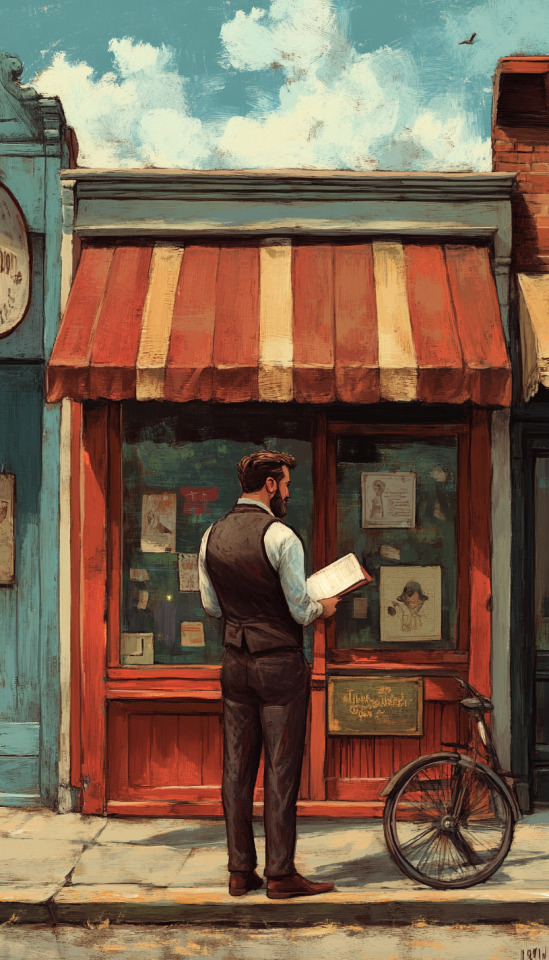
I successfully helped 20 small businesses improve their online presence, driving an 𝐚𝐯𝐞𝐫𝐚𝐠𝐞 60% 𝐢𝐧𝐜𝐫𝐞𝐚𝐬𝐞 𝐢𝐧 𝐨𝐫𝐠𝐚𝐧𝐢𝐜 𝐭𝐫𝐚𝐟𝐟𝐢𝐜.
Here are the details:
• This achievement was realized over the past year, from 2022 to 2023.
• On average, clients saw a 60% increase in organic traffic and a 70% improvement in keyword rankings.
Some notable clients include MySamu, SnowBird Sweets, and KidsToys.
• One major milestone was when SnowBird Sweets made it to the top of Google search results for “Canadian chips”.
This significant achievement was the result of a unique factor: our comprehensive and tailored SEO strategies for each business.
Marketing consisted of a strong strategy:
• Doing Competitor research.
• Low competitive keyword optimization.
• High-quality content creation.
• Local SEO efforts, and
• Bcklink building.
And it involved a dedicated team:
During a late-night brainstorming session, we decided implementing NLP terms to a series of blog posts that addressed common customer questions. This idea led to a 25% 𝐢𝐧𝐜𝐫𝐞𝐚𝐬𝐞 𝐢𝐧 𝐬𝐢𝐭𝐞 𝐞𝐧𝐠𝐚𝐠𝐞𝐦𝐞𝐧𝐭 for multiple clients.
A well-rounded and tailored SEO strategy can make a substantial difference in a business’s online visibility and overall success.
I can't wait to share more lessons with you soon.
Thank you to my incredible team at @TechLookBD for their hard work and to our clients for their trust and collaboration.
#SEO #SmallBusinessSuccess #DigitalMarketing #OnlineGrowth #Teamwork #BusinessBoost
#SEO#SmallBusinessSuccess#DigitalMarketing#OnlineGrowth#SEOResults#BusinessGrowth#TeamSuccess#OrganicTraffic#KeywordOptimization#CompetitorResearch#LocalSEO#ContentMarketing#BacklinkStrategy#SEOCaseStudy#CustomerEngagement#SEOTips#DigitalSuccess#TechLookBD#ClientSuccess#MarketingStrategy
0 notes
Text
Ultra-Low-Power Microcontroller Market Size, Share, Growth & Forecast
According to a new report by Univdatos Market Insights, The Ultra-Low-Power Microcontroller Market was valued at 1.05 billion in 2022 and is expected to grow at a steady rate of around 24.5% in the forecasted period (2023-2030) owing to the rising penetration of IoT devices. An Ultra-Low-Power Microcontroller is a type of microcontroller that is designed to operate with minimal power consumption. These microcontrollers are typically used in battery-powered devices that require long battery life, such as wearable devices, Internet of Things (IoT) sensors, and medical devices. The increasing demand for wearable devices and smart homes has led to a rising demand for Ultra-Low-Power Microcontrollers.
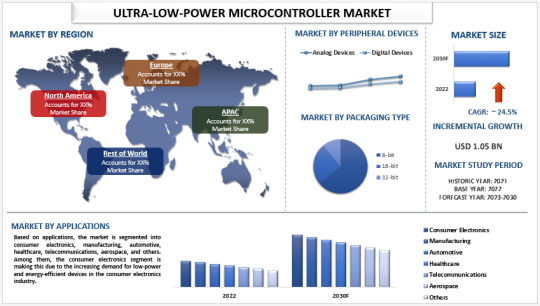
The rising demand for medical devices and energy-efficient devices has had a significant impact on the ultra-low-power microcontroller (ULMPC) market size. The increasing need for portable and wearable medical devices, such as glucose meters, heart rate monitors, and blood pressure monitors, has driven the demand for ULMPCs that can operate for extended periods of time on a single battery charge. In addition, the growing trend towards energy-efficient buildings and homes has also led to an increase in demand for ULMPCs in building automation and energy management systems. These systems require microcontrollers that can control lighting, heating, and cooling systems in an energy-efficient manner, which is where ULMPCs come in. Moreover, IoT (Internet of Things) devices are becoming more and more common in our daily lives. These devices are often small and low-power, which makes them well-suited for use in IoT applications. To power these devices, many manufacturers are turning to ultra-low-power microcontrollers (ULMPCs). These chips are designed to use very little power, which allows them to run for long periods of time on a small battery or other power source. This is especially important in IoT applications, where devices may be scattered over a large area and may not always be connected to a power source. As the number of IoT devices continues to grow, the demand for ULMPCs is also likely to increase.
Access Sample PDF Here- https://univdatos.com/get-a-free-sample-form-php/?product_id=47387Some of the recent developments are:
In Oct 2021, Renesas Electronics Corporation revealed the establishment of a new division within its 32-bit RA Family of microcontrollers (MCUs).
In Feb 2021, STMicroelectronics recently introduced a new line of microcontrollers, the STM32U5* series, which are ultra-low-power devices that offer advanced performance and enhanced cybersecurity features.
Conclusion
The ultra-low-power microcontroller (ULMPC) market is expected to grow significantly in the coming years due to the increasing demand for energy-efficient and portable devices. The market is driven by the need for low-power devices that can operate for extended periods of time on a single battery charge, which is particularly important for IoT devices and medical devices. The development of advanced ULMPCs with increased processing power and more features is also contributing to the growth of the market. Furthermore, the rising demand for energy-efficient buildings and homes has also increased the demand for ULMPCs in building automation and energy management systems.
Contact Us:
UnivDatos Market Insights
Email - [email protected]
Contact Number - +1 9782263411
Website -www.univdatos.com
0 notes
Text
Unlike IT services’ piecemeal approach, we focus on full-spectrum vehicle engineering: Tata Technologies’ CTO

The automotive industry is rapidly embracing the concept of software-defined vehicles (SDV). Today, vehicles are evolving into high-performance computing platforms, and the overall industry is moving towards creating what could be described as “mobile phones on wheels.”
SDV is an umbrella term that encompasses a variety of components. These include infotainment software systems, Advanced Driver Assistance Systems (ADAS), cybersecurity, vehicle testing, and more. Pune-based Tata Technologies counts SDV and by extension full vehicle engineering as one of its core propositions. “Vehicles are now evolving into high-performance computing platforms, and we’re at the forefront of this transformation. We’re engaged in cutting-edge work, developing multiple proof-of-concepts (POCs) and minimum viable products (MVPs) that explore how this evolution will unfold,” Sriram Lakshminarayanan, President and chief technical officer told TechCircle in an interview.
Comprehensive approach to vehicle engineering
Lakshminarayanan says that while IT companies have traditionally supported this area in parts, Tata Technologies takes a more comprehensive approach. “Often, IT companies have supported automotive projects in a piecemeal fashion, focusing primarily on areas like mobile app development or cloud hosting. We position ourselves as a full-spectrum vehicle engineering company. We combine our expertise in Full Vehicle Programs with cutting-edge technology, offering a cohesive, end-to-end solution.”
This comprehensive approach also involves integrating a robust technology layer. For instance, partnerships with chip manufacturers and vehicle OS developers are crucial, he says. To this end, Tata Technologies has collaborated with companies like ARM and NXP Semiconductors. The memorandum of understanding with Arm was signed in July, enabling the integration of Tata Technologies’ software with Arm’s Automotive Enhanced (AE) portfolio to speed up the development of high-performance vehicle computing systems.
In one of the major deals in this area, Tata Technologies in April partnered with German automobile company BMW Group to form a joint venture (JV) to deliver automotive software, including SDV solutions for BMW Group’s vehicles and digital transformation solutions for its business IT. Under the agreement, the two firms are establishing automotive software and IT development hubs in Pune, Bengaluru, and Chennai.
“Going forward, We are making significant investments in our Global Practice function that I lead. We’re doubling down on expanding our pool of global small and medium enterprises (SMEs) and enhancing our presence in key markets with market-facing SMEs. Additionally, we’re heavily investing in R&D projects focused on developing MVPs, POCs, and other innovative solutions,” said Lakshminarayan.
Acquisition-led growth in ER&D
Beyond, SDV, engineering research and development (ER&D) is a huge growth opportunity area for Tata Technologies, Lakshminarayan said. In November 2023, Nasscom and BCG released a report which that India will likely contribute 22% to the Global ER&D sourcing market by FY30. Software, Automotive, and Semiconductor sectors are expected to contribute 60%+ of India’s share of ER&D sourcing by FY30.
Amid limited organic growth opportunities, IT companies are increasingly using mergers and acquisitions (M&A) to enter this specialized field. Recent high-profile deals include Cognizant’s $1.3 billion acquisition of Belcan and Infosys’ purchases of In-Tech and InSemi. Midcap firms also actively engaging in acquisitions to enhance their expertise in sectors. Case in point is Coforge’s acquisition of Cigniti Technologies and Happiest Minds’ acquisition of Noida-based digital engineering firm PureSoftware Technologies.
“Acquisitions-led growth for IT services company in the ER&D sector is bound to happen across the industry, and we will also need to carefully consider our options. Our M&A strategy team continuously evaluates the pros and cons to determine what aligns with our goals. When the time is right, and there’s a need for complementary skill sets that fit our objectives, acquisitions will certainly be on the table. However, I would say that while we may explore these opportunities in the three to five-year horizon, it’s unlikely to happen in the short term.”
To be sure, in November 2023, Tata Technologies became the latest and the first initial public offering (IPO) for a group entity in two decades since Tata Consultancy Services’ IPO in 2004. In quarterly earnings announcement for Q1FY25, the engineering and digital services firm reported a slump in the net profit of 15% to ₹162 crore owing to declining revenue from its services segment and higher expenses. The company said that its total operating revenue rose 0.9% to ₹1,269 crore year-on-year (YoY) and fell 2.5% sequentially.
Original source: https://www.tatatechnologies.com/media-center/unlike-it-services-piecemeal-approach-we-focus-on-full-spectrum-vehicle-engineering-tata-technologies-cto/
Sriram Lakshminarayanan, President and chief technical officer at Tata Technologies.
0 notes
Text
Slowing US job openings kept equities lower, USD down
UK stocks fell on Wednesday amid global growth worries, with weak US job openings data adding to concerns that the world's largest economy is slowing.

The US Bureau of Labour Statistics said the number of job openings fell to 7.673 million on the last business day of July from a downwardly revised total of 7.910 million in June. It was the lowest total since 2021 and well below the consensus forecast for 8.090 million.
The figures came ahead of Friday's eagerly awaited August US non-farm payrolls report which will likely determine the pace of interest rate cuts by the Federal Reserve. Weak July payrolls caused a big drop in global stock markets at the start of last month amid fears the US economy could tumble into recession.
On Tuesday, US stocks plunged afresh led by the tech-laden Nasdaq Composite which shed 3.3% with AI chip darling Nvidia alone down 9.5%. The falls followed weak US manufacturing data which revived fears about the health of the economy just as the Federal Reserve is expected to sanction a first cut in interest rates at its policy meeting later this month. Wednesday’s data seemed to back up those fears, indicating a softening in the US labor market.

The data dragged the US dollar lower benefitting the pound, which rose 0.2% against the greenback to 1.3140. But sterling was weaker versus the euro, losing 0.12% at 1.1861 after robust purchasing managers index (PMI) data from both the UK and the eurozone.
The seasonally adjusted UK PMI composite output index rose to 53.8 in August, up from 52.8 in July. Meanwhile, the eurozone composite PMI rose to 51.0 from 50.2 in July.

As US stock markets stabilised after the bruising session on Tuesday, the main benchmarks in London also came off their worst levels but remained weak. At the close, the blue-chip FTSE 100 index was 0.3% lower at 8,269, while the broader FTSE 250 was flat at 20,808.
Among the fallers, housebuilder Barratt Developments shed 4.6% after reporting a 76% drop in profit, the result of lower home completions, weaker average selling prices and reduced margins. Others in the sector were dragged lower too, with Persimmon off 3.3% and Taylor Wimpey down 2.6%.
Insurer Direct Line fell 2.4% after its first half pretax profit and dividend fell short of market expectations, despite a marked improvement from the year before.
Warehouses developer Segro lost 1.2% after agreeing a deal to buy FTSE 250 listed peer Tritax EuroBox, which gained 3.8%. Under the deal Tritax EuroBox shareholders will receive 0.0765 of a new Segro share for every Tritax EuroBox share held.
Luxury goods retailer Burberry dropped 3.7% ahead of its long-expected demotion from the FTSE 100 after 15 years in the index, a move confirmed after the London market close. Burberry will swap places with insurer Hiscox, which moves up from the FTSE 250 index. Hiscox edged up 0.8%.
Recently floated tech firm Raspberry Pi Holdings is the only promotion to the FTSE 250 index, at the expense of IP Group. Raspberry Pi shares were down 3.4% on Wednesday, while IP shares added 4.4%, not enough to put off the inevitable.
Disclaimer:
The information contained in this market commentary is of general nature only and does not take into account your objectives, financial situation or needs. You are strongly recommended to seek independent financial advice before making any investment decisions.
Trading margin forex and CFDs carries a high level of risk and may not be suitable for all investors. Investors could experience losses in excess of total deposits. You do not have ownership of the underlying assets. AC Capital Market (V) Ltd is the product issuer and distributor. Please read and consider our Product Disclosure Statement and Terms and Conditions, and fully understand the risks involved before deciding to acquire any of the financial products provided by us.
The content of this market commentary is owned by AC Capital Market (V) Ltd. Any illegal reproduction of this content will result in immediate legal action.
0 notes